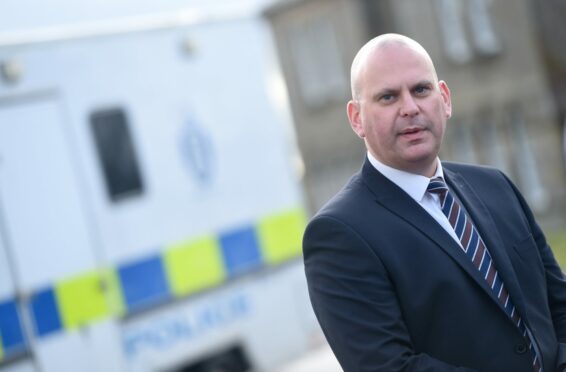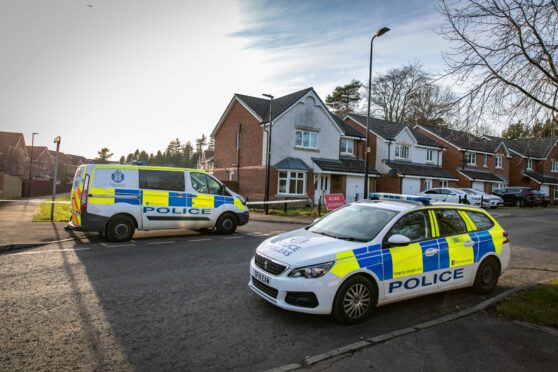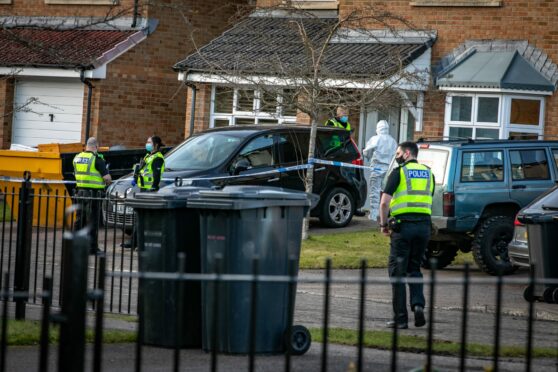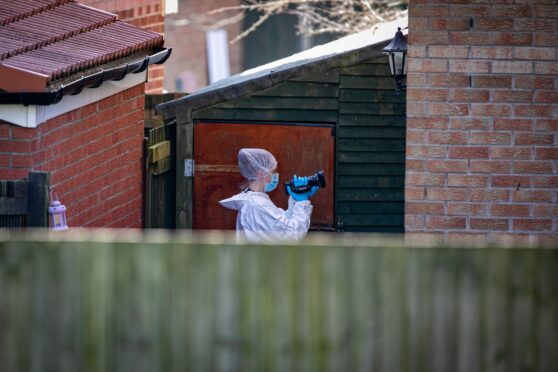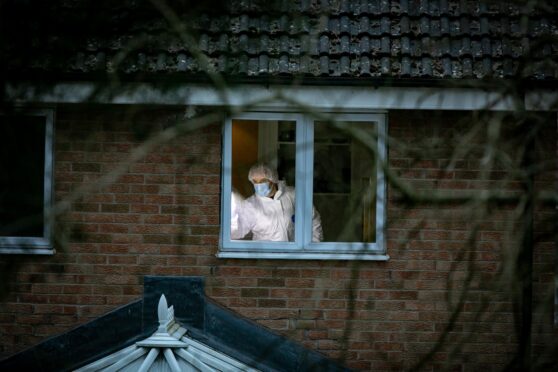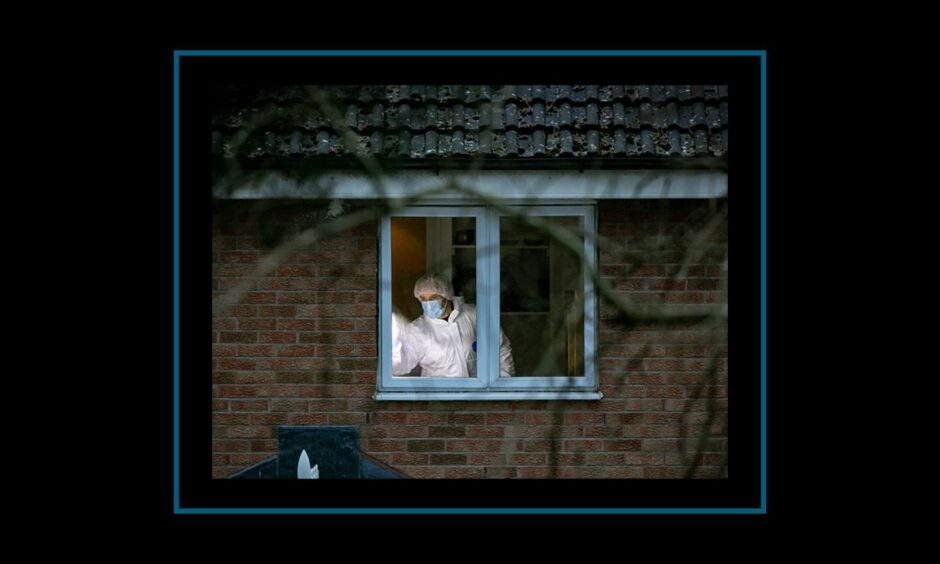
The Bennylyn and Jellica Burke murder case will go down as the most complex investigation in the history of Police Scotland’s Tayside division – and it all started with a phone call.
Lexington Burke, the estranged husband of 25-year-old Bennylyn Burke, arrived at her Bristol flat to collect their two-year-old daughter Jellica on February 19, 2021, and take her out for the day.
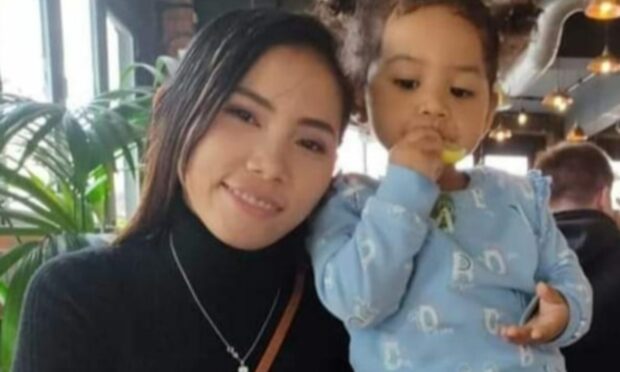
Bennylyn and Jellica Burke.
But there was no answer – nor did Bennylyn respond to the note he put through the door or several phone calls in the coming days.
A few days later, social workers called Mr Burke and said they too had not heard from Bennylyn.
Both social services and Mr Burke became concerned and both called police.
During a missing person’s call on March 1, 2021, social services told Avon and Somerset Police that Bennylyn was living in emergency accommodation – a first-floor flat in the Kingswood area of Bristol – and had not been seen since February 17.
Mr Burke made a similar call.
Police took it seriously.
Bennylyn had not been missing before and such a move was out of character.
Police viewed her as vulnerable as she was living alone with a two-year-old daughter.
And any significant travel during a strict Covid-19 travel ban would have appeared unusual.
That tone was reflected in statement released by Avon and Somerset Police on March 1, which expressed “increasing concern” for her welfare.
They asked anyone who had seen Bennylyn to call 101.
A breakthrough
Police set about piecing together Bennyln’s movements in the hours and days after February 17, studying computer, phone and financial-transaction records.

Officers worked intensively before a breakthrough came on March 5 – and that would lead them 440 miles north, to Dundee.
The English force spoke with counterparts at Police Scotland.
Their point of contact was Detective Superintendent Graeme Mackie of Police Scotland’s major investigation team.
There had been a sighting of Bennylyn and Jellica in a Renault Scenic car in Bristol.
CCTV footage captured them with Innes outside a branch of Sainsbury’s in the supermarket.
Officers obtained a registration plate and ANPR data showed it had travelled from South Gloucestershire to Tayside – and that it was registered to Andrew Innes at 21 Troon Avenue.
In court, advocate depute Alex Prentice said: “It was a very impressive piece of police work, using car movements in combination with telephone records to determine where Bennylyn had been.”
At this stage, police had no particular reason to believe Bennylyn or Jellica had come to harm.
They had retrieved CCTV images of them from a couple of days earlier walking through Dundee city centre and there was no sign of a struggle or distress.
However, because the pair were missing, police officers still wanted to do a “welfare check” at the Troon Avenue property.
According to evidence given in court, at 3.20pm that day, PC Gavin Burns asked Innes if he had seen Bennylyn.
Innes told the officers he had met Bennylyn but broke things off with her when he saw “flirty” messages from men on her phone.
He told the two PCs he had driven her to the Old Inns Café in Cumbernauld where she met another man.
The officers noticed another girl in the property.
Innes claimed she was his daughter.
After the case, Detective Chief Inspector Graham Smith said: “Innes tried to use Covid-19 restrictions as an excuse to avoid letting the officers into his property.
“He also claimed it was inappropriate for the officers to go inside because his ‘daughter’ was undressed having just got out the bath.
“However, the officers saw through a gap in the door that the child was fully dressed – and this raised suspicions.
“Once they got inside officers were able to push Innes further on where Bennylyn and Jellica were and also establish the true identity of the girl within his home.”
It was this persistence that was key to rescuing the little girl inside the house.
DCI Smith said: “It was as they challenged him further as to Bennylyn’s whereabouts that Innes said ‘she’s under the kitchen floor.’
“He then disclosed that Jellica was also there with her mother.
“The two officers who carried out the initial welfare check were persistent in challenging the stories they were being given by Innes.
“This tenacity and professionalism, in my opinion, almost certainly saved the life of another child who was in the house at that time.”
Innes was arrested and was led away to a waiting police car.
It was this point our reporter heard him tell officers Bennylyn was dead and buried “10ft under”.
It would be Innes’s last day of freedom.
Meanwhile, the community was racked with worry.
There had been extensive police activity from mid-afternoon on March 5 and it would be 27 days before it ceased.
People did not know of the gruesome scene unfolding in the property and wanted to know what was going on.
All some of them knew was that Innes had previously posted on social media that he had been doing improvement works on his kitchen – possibly explaining why there was a skip in his driveway.
Police announce an arrest
At that point nobody outside of the police knew Innes’s arrest had anything to do with the missing person’s appeal, so Det Supt Mackie put out a statement on March 6 saying a 50-year-old man had been arrested.
He added: “Bennylyn’s next of kin have been made aware and are being supported by colleagues in Avon and Somerset Police.”
Det Supt Mackie said there would be an increased police presence at Troon Avenue over the coming days.
He thanked the community for their help.
Detectives had their man – but there was still work to do.
On that weekend of March 6 and 7, a forensic search of the Troon Avenue house intensified.
A large white tent covered the skip.
Neighbours said they heard “thudding and banging” within the property, suggesting the forensic search involved a police exploration of the property’s structure.
Police cordoned off all access points to Troon Avenue and residents had to sign in and out of the street.
‘Once in a generation crime’

As the new week began on March 8, the police search activity at the property continued.
Officers had erected blue tents in the front and rear gardens and taped up all the windows.
They spent the entire week searching the property, with officers guarding it round the clock.
It took police six days to carefully recover the bodies.
DCI Smith said: “Officers involved in the case continue to be deeply affected by the traumatic nature of what was by described by a colleague from the National Crime Agency as a ‘once in a generation crime’.
“The bodies of Bennylyn and Jellica were around 1m below the floor covered in concrete so it was a challenging and harrowing task to recover them.
“What was particularly difficult for the team was that they knew what they were going to find. It was a horrific scene.
“It is a credit to them how they meticulously worked for six days to recover the bodies in the most difficult circumstances.
“We had never experienced anything like it.”
He added: “Recovering Bennylyn and Jellica’s bodies was our main focus, but we had to acknowledge there could have been other bodies buried there – we had no idea what we were dealing with.”
Then, the search branched out.
A second search site
Police established a link between Innes and a ground-floor flat at a tenement block on Main Street, Dundee, near the junction with Dens Road, and quizzed neighbours there.
However, the property was not mentioned during legal proceedings and police have not said what the link was.
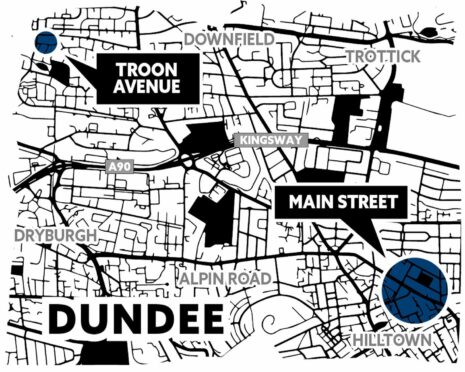

On March 18 – 13 days after police began their search of the Troon Avenue property – they announced they had found two bodies.
Det Supt Mackie said: “This is a significant development in what has been a particularly challenging inquiry for everyone involved.
“The thoughts of everyone involved in this investigation are with Bennylyn’s family at this time.”
Two weeks passed before a further police update.

On April 1, a police spokesman confirmed the bodies had been formally identified as Bennylyn and Jellica.
Amid the tragic news, police continued working with the National Crime Agency and Interpol amid concerns Innes might have posed a threat to other women and children.
DCI Smith said it was particularly disturbing because Innes had not been known to the police before.
Also, police found evidence he was specifically targeting women with young children from the Philippines.
To the relief of everyone involved in the investigation, there was no sign of any imminent threat to potential victims living overseas.
DCI Smith said: “We worked closely with Interpol and a range of international law enforcement agencies on this inquiry, but found no evidence of further offending against any other women or children.”
